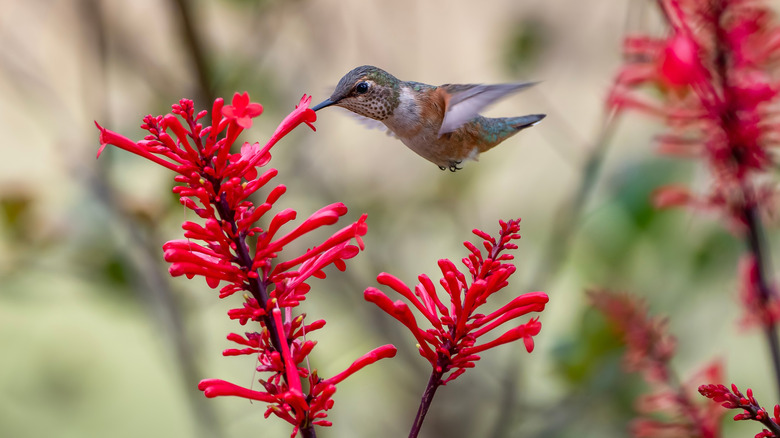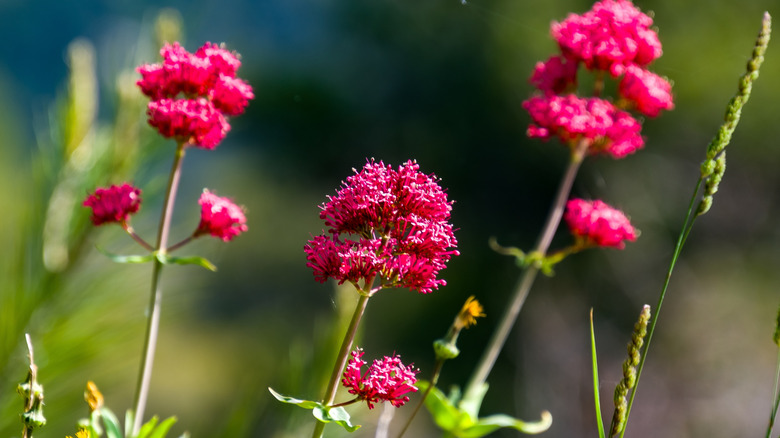The Late Summer Flower That Can Still Attract Hummingbirds In September
As hummingbirds make their migratory trek throughout many regions of the United States this fall, they often rely on late-blooming perennials to keep them fed. The ones passing through your yard will be particularly grateful for late-blooming flowers like the red valerian (Valeriana rubra). Hummingbirds need all the late-blooming nectar they can get. The Rufous hummingbird, for instance, often travels all the way from Alaska to Florida when the days start growing shorter. Traveling these many thousands of miles, hummingbirds might burn a whopping 150,000 calories a day!
Red valerian, also known as Jupiter's beard, offers a September banquet for the little birds who need to bulk up for their long trek. This woody perennial has many sweet-smelling and nectar-rich panicles in shades of white, red, and blue. If you want to attract hummingbirds, go for the red options, because they see this color more vividly than other shades, like blue. Red valerian, just like ironweed, will be one of many fall-blooming flowers that will keep hummingbirds coming into your garden.
Bees and butterflies might also want to snack on this pretty flower well into the cooler months. Perfect for USDA Plant Hardiness Zones 5 to 8, red valerian tolerates as little as two hours of sunlight a day. Know that it doesn't much like the heat, though. It prefers neutral or slightly alkaline soil, and under the right conditions it might grow to be about 3 feet tall.
How to plant red valerian
If you're ready to plant red valerian, you can do so from seed or cuttings in the spring. Red valerian needs well-draining soil, but it can pass on fertilizer or rich organic material, as it doesn't mind poor soil. This plant grows quickly. You can likely expect flowers the first year when grown from seed. Because it grows so fast, you'll probably also need to divide the plant every few years so it doesn't start to crowd itself out. While not invasive, red valerian might be aggressive. You could consider deadheading this plant, as red valerian loves to self-seed, and might propagate itself throughout your garden beds.
Don't worry if the weather gets too dry, either, since red valerian counts itself among drought-resistant varieties of perennials. Honestly, the flower doesn't require much care, which explains why it grows wild on roadsides throughout the West and Midwest. You might consider pruning back red valerian in the late summer, but otherwise it probably won't need much attention from you. You can grow red valerian inside as a houseplant, as well, but it won't attract many hummingbirds in your living room.
While you might be thinking about the best ways to attract hummingbirds into your yard in September, don't forget that it's probably a good idea not to rush the timing to take down your hummingbird feeder as afternoons grow colder. Leaving up feeders won't interfere with hummingbird migration, thankfully. Plus, late arrivals will welcome the hospitality.

